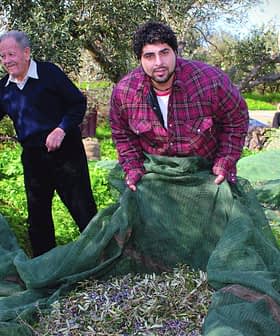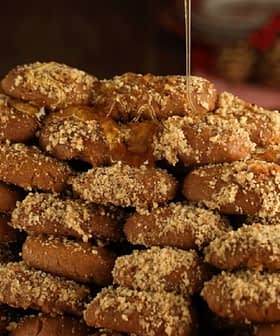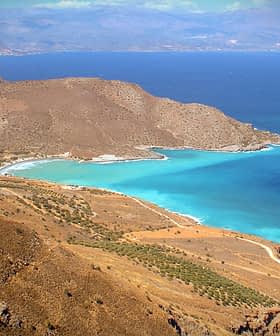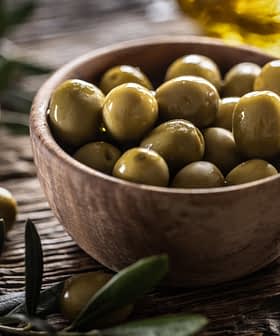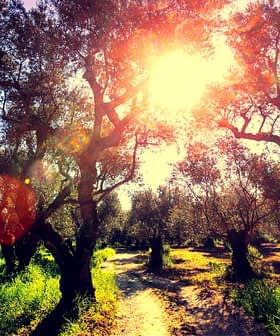Mediterranean Lifestyle Alive and Well on Crete
Crete is one of the best places to experience the Mediterranean diet and lifestyle, despite the prevalence of unhealthy fast food and snacks. The Mediterranean diet is more than just food, it is a lifestyle that includes physical activity, socializing, and enjoying meals with family and friends. The diet is based on locally grown produce, olive oil, and moderate amounts of meat and dairy, all of which contribute to the health benefits associated with the Mediterranean diet.
Here on the island of Crete in Greece, kiosks are full of potato chips, candy, crackers, chocolate croissants, and cigarettes; cafés serve huge, rich, syrupy desserts; and toasted sandwiches with processed cheese and turkey on pre-sliced white bread are popular children’s snacks. This is still, however, one of the best places in the world to immerse oneself in the Mediterranean diet and lifestyle.
The cheese pies and souvlaki that constitute Greek fast food may not be much healthier than American hamburgers and French fries, but the real food found in family kitchens and family-run restaurants is a different story, and so is the way it is eaten.
What is now called the Mediterranean diet is based on the Cretan diet and similar diets from some of the other areas bordering the Mediterranean Sea, as studied and described in the 1950s and ‘60s, before “fast food culture” hit the region. But the Mediterranean diet is really more than a diet: it is a lifestyle bound up with a diet, and a diet bound up with a lifestyle.
The active nature of that lifestyle has continued to some extent. People of all ages walk a lot: seniors who don’t drive, kids making their way home from school, grownups exercising, and families and friends out to enjoy themselves on weekends and holidays. Others exercise by gardening, farming, playing sports, or tending sheep or goats, and those who live near the coasts swim in the sea (all year round, in the case of some hardy winter swimmers).
The conflation of the Mediterranean lifestyle and diet is especially obvious when dining with Greek friends or extended family members, whether at home or in a taverna, indoors or outside. There’s sure to be a great deal of food, plus red wine and perhaps raki, and plenty of time devoted to eating, savoring, drinking, laughing, and conversing.
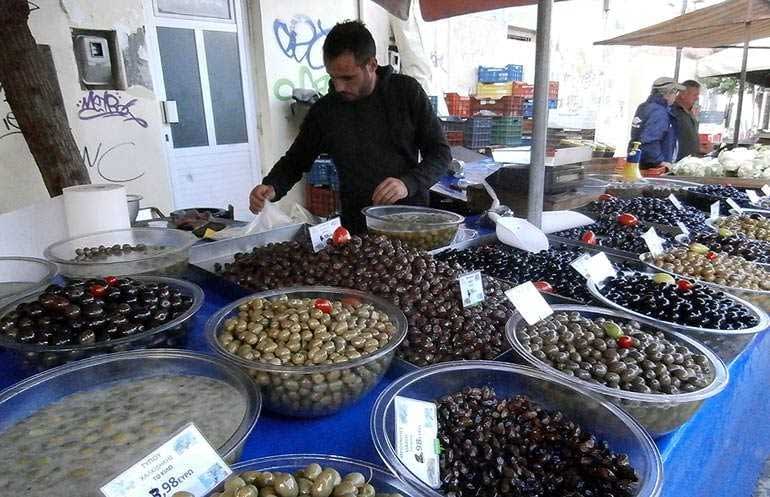
This can tire children who are too young to amuse themselves, since they’re generally included, and adult conversations and meals can stretch on throughout a Sunday afternoon or late into the night, as Greeks relax and socialize in the Mediterranean fashion. However, if the children can play nearby, they’re generally both welcome and content.
It’s all part of the extended family life of Greece, where socializing seldom occurs without food and drink, and hospitality and generosity can mean sharing produce and olive oil as well as treating friends to coffee or a meal, with or without a view of the sea.
The food enjoyed here in Crete is often part of the famous Mediterranean diet, with its well-known health benefits: plenty of olive oil used for cooking, for dipping bread, and liberally poured over salads and fish; an abundance of fresh vegetables and fruits; legumes, potatoes, and nuts; moderate quantities of dairy, eggs, and wine; more fish than poultry, even less red meat, and limited animal fats.
Meals are often built around beans, lentils, or vegetable dishes such as green beans or cauliflower cooked with olive oil, onion, and tomato. With fish, poultry, or meat, there are always vegetables drenched in olive oil — for example, salads, beets, or the boiled wild greens (horta) found all over Crete. On special occasions, Cretan meals tend to include either small cheese pies (tiropites) made with the fairly low-fat, soft white mizithra cheese, or similar little pies (kaltzounia) made with spinach, wild greens, and/or herbs.
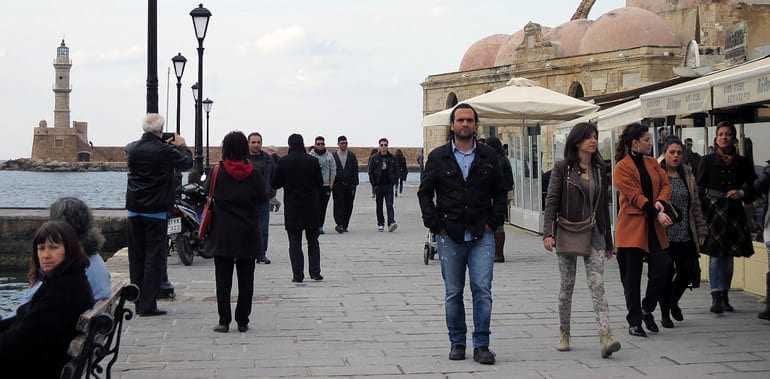
When guests are invited to a home or a restaurant, meat is usually part of the meal (except during certain fasting days), although it isn’t supposed to be a prominent feature of the traditional Mediterranean diet. This may be because Greeks generally eat less meat than (for example) Americans, so meat is associated with festive occasions and holidays when people gather to celebrate over a meal. That meat won’t necessarily be beef, pork, or chicken: it could as easily be lamb, goat, or even rabbit. (There aren’t many cattle in Greece, but sheep and goats roam all over Crete, wandering on and off roads and in and out of residential areas.)
It is easier to eat healthy food here than in many parts of the world, since excellent locally grown fruits and vegetables are always available at reasonable prices. Even now, in the middle of March, there are wonderful sweet oranges, as well as lemons, lettuce, wild greens, artichokes, eggplant, peppers, and more at the popular laiki agora, or farmers’ market, as well as in stores.
It is striking how few Cretans waste yard space on grass, which exists in fairly small patches only in wealthier neighborhoods or parks. Instead, yards are filled with flowers (especially geraniums), fruit trees (including olives, loquats, and the ever-present lemons that are producing well now), and vegetable gardens. This way, gardens provide a fair proportion of many people’s produce in the summer and early fall. For more fresh produce, many older women gather wild greens and herbs from the hillsides.
Walking through a community, one may run across fallen avocados, lemons, and olives, abandoned but still productive grapevines, and an abundance of wildflowers. Chickens are also common enough that mothers out for a stroll with their offspring may be offered the fresh eggs that are considered especially beneficial for growing children.
A key feature of a healthy Mediterranean diet is, of course, olive oil. Another Olive Oil Times article mentions that “one out of twenty Greeks have a direct family relation to an olive grove,” but locals agree that the number must be much higher in Crete — perhaps one in two Cretans. While 5 kilogram metal containers of Cretan olive oil are readily available in all the supermarkets, relatively few people seem to buy them regularly, because so many obtain their oil from family members or friends. Some buy extra virgin olive oil from people they know; others help gather the family olives and receive their share; still others receive olive oil as a valued gift, perhaps along with olives and/or homemade red wine.
Now that some Greeks are fasting for Lent, avoiding meat, fish, eggs, and dairy, it’s a perfect time to try some excellent, healthy vegan recipes that are rich in olive oil. Lentils, for example, are a common, nutritious main dish here (especially easy if you use a food processor to chop the vegetables).
Lentils, or Fakes
One of many traditional “ladera,” or oily, Greek dishes made with olive oil
About 6 servings
2 ¼ cups dry lentils
Water for initial boiling of lentils
1 cup olive oil, preferably extra virgin
½ cup red wine (optional)
1 teaspoon dried oregano (optional)
2 bay leaves
Salt and pepper to taste (perhaps 1 or 2 teaspoons salt, if desired)
2 large onions, finely chopped (in a food processor or by hand)
2 large tomatoes, finely chopped
2 carrots (optional), finely chopped
2 garlic cloves, finely chopped
5 cups water (more or less, as desired or as needed)
Examine the lentils and remove any small stones mixed in with the legumes, especially if you bought them in bulk rather than packaged. Boil the lentils in some water until the water foams up, then strain and rinse them.
Sauté the strained lentils and olive oil on high heat for a minute or so, stirring. Add the wine, oregano, bay leaves, salt, and pepper, and stir over high heat.
Stir in the remaining ingredients and bring to a boil. Once the mixture has boiled, reduce heat, cover, and simmer for about 30 to 45 minutes, to desired tenderness. Stir occasionally, and check to see if you need to add more water as the lentils cook.



